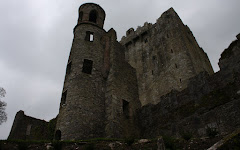Sunday, August 10, 2014
A Train Story
After the development
of several water projects in Utah’s central desert, Delta was founded in 1908
as an agricultural town supported by irrigation.
With that irrigation water in play, Delta achieved a prominent ranking
as one of the largest alfalfa and hay seed producing regions in the USA from
the 1920s through the 1960s. But this is
not an agriculture story; it is a train story.
In 1911, the Utah Southern Railroad closed its Deseret Station in Oasis,
Utah, and opened its Delta Station—the largest station south of Salt Lake
City—in the burgeoning new town. My
mother was born and raised in Delta, Utah (not counting the one year the family
resided in Las Vegas). Throughout my
entire childhood, my family made regular trips to Delta to visit my
grandparents, a few aunts and uncles, and lots of cousins. I was a girl raised in suburbia, but the
family visits to Delta introduced me to small town life—a realm with only one
high school, pickups and tractors, water play optioned by large scale irrigation,
dragging Main Street, full knowledge of back stories for the cashier in the
store or the teens at the fast-food drive-in where we bought root beer flavored
soft serve cones—and trains.
On a summer’s
night, outside on a lawn in a tangle of sleeping bags with siblings and cousins,
or even nestled on a couch or a bed in my grandparents’ house with windows open
to catch the fortuitous cooling of a desert in darkness, the din and the
vibration and the melody of trains wove themselves into intervals of a night’s
soundtrack. One summer my mother led us
on a family hike along the tracks. We
practiced walking the rails like she had done as a child, with our hands we
felt the tremor of those rails as a train in the far distance approached still
too silent for our ears, then we marveled at the tangible clamor of a train
passing over us as we crouched under the tracks bridging a dry gully, and we
gaped at the flattened penny my dad placed on the tracks before the train
actually passed our small party standing in reverential awe a safe distance
away. In Delta I learned the sound
repertoire of trains: hiss, clank,
murmur, whistle, chug, rumble, shriek, and roar. Up close and personal, without a car’s
protective encasement, a moving train envelops one’s very being in blaring
tumult, ambient agitation, and then a sense of shift in time and space. For me, even now, it is shocking alchemy.
During
summers stateside, I often drive from my dad’s home near Tooele, Utah, to the
Shakespeare Festival in Cedar City, Utah, to attend a few plays. Instead of taking the Interstate route, I
follow a string of two-lane highways “the back way”—Tooele to Delta to Milford
to Cedar City—roads with sparse traffic and signs cautioning drivers of the
possibility of deer or cattle sharing the drive space. My sister Diane mentioned a spring located
just off the highway in all the space and empty between Delta and Milford that
might offer some photographic moments interesting to me; it would also
necessitate my leaving the highway and following a dirt road for short way. On my return trip from Cedar City to Tooele,
I spotted the sudden green space in the otherwise arid landscape, and I turned
off the highway onto the dirt road.
After twenty minutes or so of dirt road driving and photographic fun, I
made my way back to the highway but discovered this:
A train
fully stopped on the tracks just in front of my entrance back onto the highway!
I waited a
few minutes, hopefully expecting it to begin moving again. Instead, I heard the hum of engines power
down to silence. Surely it would move
again soon, I explained to myself, because why would a train stop here. Then I hopped back out of the car to take
train photos, of course. The train remained
still. There was no way I could get my
car to the highway side of the tracks as long as the train maintained its
current position. Where did the dirt
road lead, I began wondering. Would it
end abruptly somewhere out on the desert or would it connect to another road
that would lead back to the highway at another place? What kind of options did I have if the train
did not move?
Maybe
twenty minutes later I discovered the headlight of a train traveling in the
opposite direction of the one stopped in front of me. So, the scenario unfolded before me did have a
rationale, and I smiled with a certain sense of relief.
The second train passed by, and the first
train revved up the engines once more before slowly commencing forward
movement. Eventually the space between
my car at rest on the dirt road and the highway across the tracks had cleared
of train car obstacles, and I was on my way.
Once on the paved highway, I pursued “my train,” passed it, and then
surrendered my view of it at all as the tracks angled right and the highway
curved left.
Train
tracks stretch along the bench of the small mountain range several miles east
of my dad’s house. On summer nights when
the windows are open, sometimes I hear the mournful wail of a train running those rails, and I am
transported into the magic of childhood and memory. All is well and I sleep.
Subscribe to:
Posts (Atom)































